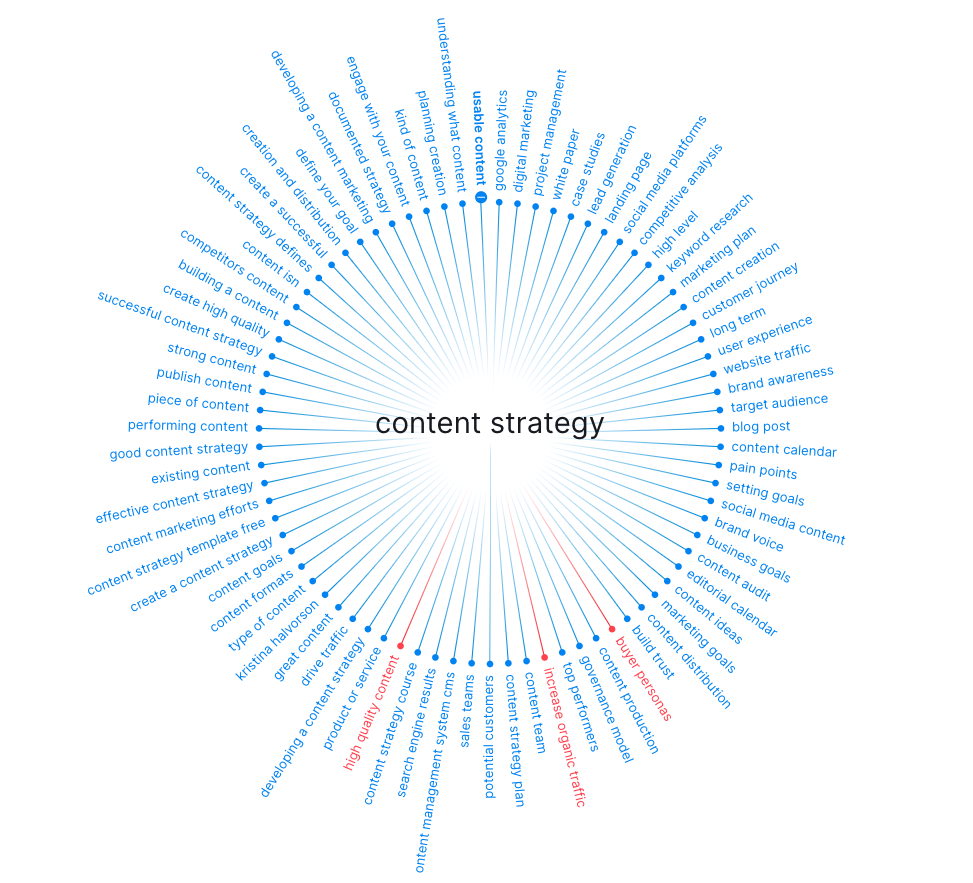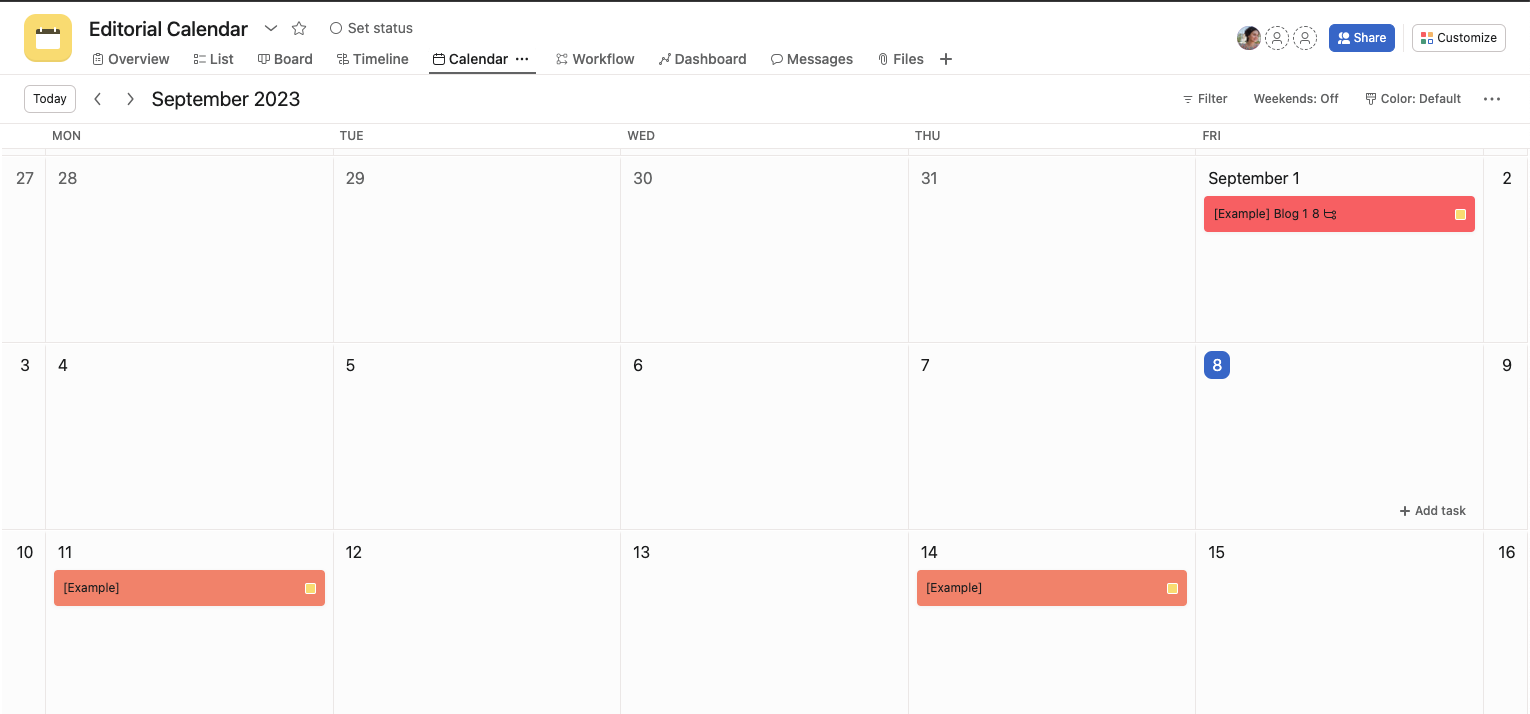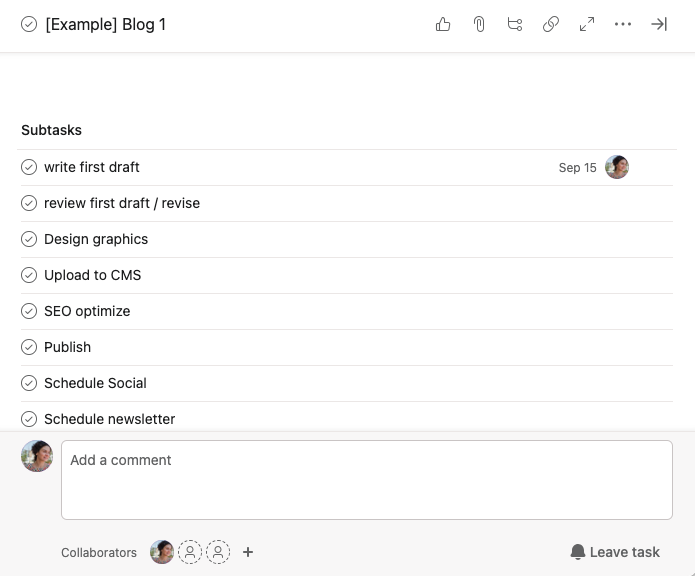
An Effective Editorial Workflow For Your Team
An editorial workflow is a system that ensures efficient content creation, review, editing, approval, and publishing. It also ensures that the process is organized and meets stakeholder needs. It is an essential component of our SEO content strategy services, and content strategy as a discipline.
In an everyday sense, it allows you to create and use one piece of content in multiple types of content marketing. You can use a blog in an email newsletter or a part of text in social media posts. It also allows you to know which team members are responsible for what. You get the idea.
This blog post will help you create your effective editorial workflow, including all the necessary steps and people involved. We are limiting this post to publishing blog or landing page content. Once you set up your essential components, you can incorporate social media, newsletters, videos, etc., into your editorial workflow.
We are soft-launching a workshop to help you plan content. You and your team can do it online with damolade using Zoom. Stay tuned for more. Or contact us for early-bird access today.
What is an Editorial Workflow
To be seen as an expert in your field, you must maintain trust, accuracy, and compliance in your publishing. Editorial workflow keeps checks and balances on content strategy by ensuring adherence to the people components of your overall strategy.
An effective editorial workflow helps you achieve strategic goals by:
1. Ensuring Accuracy:
Information published via your blog, landing pages, and social media must be accurate to maintain credibility. An editorial workflow includes subject matter expert review and fact-checking steps to minimize errors.
2. Meeting Regulatory Requirements:
For example, some sectors, like the Financial industry, must adhere to strict regulatory guidelines. An editorial workflow ensures compliance with these regulations.
3. Consistency:
Maintaining a consistent tone and style across content builds brand identity and trust with readers.
4. Efficiency:
Organized workflow saves content creation and publishing time, allowing faster response to market changes.
RELATED: Republishing Content: Update Old Blog Posts For An SEO Boost
Steps in an Editorial Workflow
First things first. You will need some templates to get you started.
First, we plan our content for the quarter using a spreadsheet. Then, we transfer it to a project management system to assign roles and responsibilities. More on that step to come.
This is how we approach content planning. We use a hub and spoke model to define the main page and related topics in that category. This model improves our SEO by establishing our expertise in a particular category through various related topics.
Here is a hub and spoke mind map example around the “Content Strategy” category:

Content strategy is the hub, and the topics are the spokes.
According to Search Engine Journal:
From an SEO perspective:
- Hub: High-volume targeted keywords (usually transactional). For example, your primary services.
- Spoke: Lower volume and longer tail/supporting keywords (usually informational keywords). For example, “how-to” content that explains your services and how they can benefit buyers.
1. Content Ideation:
It starts with brainstorming and idea generation, aligning content with business goals and audience needs. Have a plan for your content with research, messaging, personas, and goals in mind to know what content to create. We recommend creating a one-page plan to get all stakeholders aligned.
If you’re ready to start your editorial planning, here is our planning spreadsheet. You can download it here.

We get buy-in from key stakeholders around content that will support business goals for the quarter during a meeting. This is where having that one-page strategy done ahead of time will come in handy!
For our meeting to be successful, we need to accomplish the following:
- Choose a main service category to focus on for the quarter, such as “non-profit wealth management services.”
- Choose the main topics in that category. Do we want to create content with high competition on the main topic? Or are we concentrating on less competitive, informational keywords? These keywords are known as subtopics.
For example, the topics below are “non-profit organizations,” “cash flow,” and “board of directors.” All of these would have their sub-topics, which you can see listed beneath the main topics.

Fill in all of this during a call with stakeholders. We use content marketing tools in our software, SEMRush, to find popular and relevant topics for our audience. Now, we have all our topics for the entire quarter that will all link to the main category hub page.
2. Planning:

Create a content calendar with topics, deadlines, and responsible team members. This is where an editorial calendar comes into play.
We highly recommend using a project management tool like Asana for this part. It serves as the backbone of the workflow, helping teams plan content production and publication strategically. The editorial calendar should include:
– Content topics and titles.
– Assigned authors and editors.
– Due dates for each stage of the workflow.
– Publication schedule.
– Keywords and SEO strategy.
 Customize your tasks and subtasks as appropriate in the workflow.
Customize your tasks and subtasks as appropriate in the workflow.
Pro tips: Stick to due dates! Know who is responsible for it! Communicate amongst departments! Avoid silos!
3. Research:
Gather data, statistics, and information relevant to the topic.
4. Writing:
The designated writer authors the first draft, following style guidelines
5. Editing:
An editor reviews the content for grammar, style, and accuracy.
6. Compliance Check:
Compliance experts ensure the content meets regulatory standards in the financial sector.
7. Approval:
We send the content for approval to relevant stakeholders, which may include legal, compliance, and management teams.
8. Formatting and Design:
We add graphics and formatting to enhance readability.
9. SEO Optimization:
Incorporate relevant keywords and meta tags for search engine optimization.
10. Final Review:
We conduct a final review to ensure we incorporate all changes.
11. Publishing:
Content is published on the website, along with the SEO metadata, following the predetermined schedule.
12. Promotion:
Share the content through social media and email newsletters.
13. Monitoring and Analytics:
Track the performance of the content and make adjustments as needed.
Here’s what an editorial workflow might look like:
 People Involved
People Involved
– Content Creators: Writers and subject matter experts.
– Editor: Ensures quality and consistency.
– Compliance Experts: Ensures adherence to regulatory requirements.
– Management: Approves content and oversees strategy.
– Designers: Enhance visual appeal.
– SEO Specialists: Optimize content for search engines.
Each process step is assigned ownership in Asana with due dates and responsibilities. You will eliminate uncertainty and have a clear step-by-step process for everyone to follow.
Resources Needed
– Content Management System (CMS): A platform for content creation and publishing.
– Editing Tools: Grammar and style checkers. Get one month of Grammarly free here.
– SEO Tools: Keyword research and optimization tools. We use SEMRush. Ahrefs is also great.
– Analytics Tools: To track content performance.
– Collaboration Software: Facilitates communication among team members. Use a project management system like Asana.
In conclusion, an editorial workflow, complemented by an editorial calendar, is critical for managing web content effectively in the financial industry. It ensures accuracy, compliance, and consistency while streamlining the content creation process. By following the defined steps and involving the right people and resources, small teams can maintain a solid online presence while adhering to industry standards.
The editorial calendar is essential for keeping work organized and on track. It helps teams plan, execute, and monitor their content strategy effectively.
This process should be dynamic and evolve as new team members and priorities come into play. Keep your systems lean so you can make changes and adjust over time as needed.
We will soon be launching this as a workshop where we customize this process for YOUR team. Stay tuned for that, or contact us today to get early access to our proven methodology and an early-bird discount!


